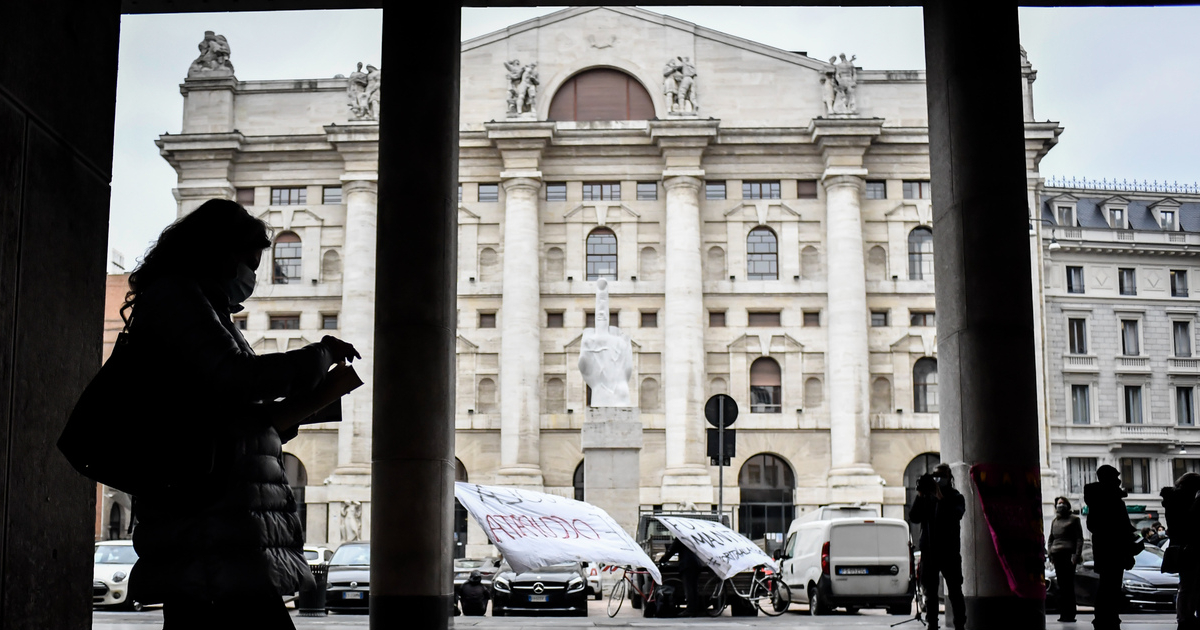European stock exchanges opened lower after the Ukrainian crisis plunged with l’intervention of the Russian army in the separatist republics Of Donetsk e Luhansk. But the lists soon recovered ground and then closed just below parity in support of the energy sectorwhich has a lot to gain from rising prices linked to growing tension. The price of the Petroleum it is no coincidence that it made a leap: in the morning the WTI exceeded 95 dollars a barrel. As for natural gas, after hitting a maximum a 81,45 euro per megawattora now on the square in Amsterdam stands at 79,6 euro al megawattora, + 9.8%. Despite the half reassurances that came from Vladimir Putin (“Russia is oriented to continue the uninterrupted supply of this energy resource”), lo German halt to pipeline certification Nord Stream 2 it could turn out to be a boomerang. The former Russian premier Dmitry Medvedev, today vice president of the Security Council, tweeted an explicit threat: “The German Chancellor Olaf Scholz has issued an order to stop the certification process of the Nord Stream 2 gas pipeline. Good. Welcome to the new world where Europeans will pay off very soon 2 thousand euros per thousand cubic meters of natural gas“.
Second Goldman Sachsin the event that the worst-case scenario materializes in the confrontation between Moscow and Kiev – that is, “a real conflict” in Ukraine accompanied by “sanctions punitive ”towards Russia, the European and Japanese stock markets would collapse by 9% and the US of 6% (10% for the Nasdaq). Analysts of the American bank also believe that a 10% collapse of the ruble and a 13% surge in oil are also possible.
On the front of the government bondsthe BTP yield, which was 1.6% at the beginning of February, briefly rose again in the morning over 1.9 percentage points. The differential with respect to the German Bunds consequently widened beyond 170 points and then fell back to 168. On the markets currency the focus is on ruble, which lost a lot of ground against the dollar and the euro, reversing course in the evening. It also pays duty to the conflict there hryvniathe Ukrainian currency, which loses 1.2% against the dollar, hitting its lowest since 2015. The Moscow stock exchange remains in sharp decline (-5%), which on Monday had sunk by 11%.
Soft wheat and corn are on the rise – The impact of the crisis has meanwhile also been felt on the prices of agricultural raw materials: at the Chicago Commodity Exchange the soft wheat used for bread and biscuits marks an increase of 4 euros per ton compared to the end of last week (+ 1.5%), the most for the feeding of livestock it goes up 5 euros per ton (+ 2%) and soy is quoted at 6 euros more (+ 1.75%), according to the Agricultural Consortiums of Italy. From Ukraine, Coldiretti remembers, soft wheat arrives in Italy for a share equal to 5% of the total import national and a quantity of 107 thousand tons in the first ten months of 2021. An almost double value compared to that coming from Russia from which also durum wheat for pasta arrives (36 thousand tons). Ukraine ranks third as a global wheat exporter, while Russia ranks first.
Italy inflation confirmed at + 4.8% in January – In Italy theState meanwhile has released the definitive data on consumer prices in January, which confirmed + 4.8% of the provisional reading: it is the maximum since 1996. The marked acceleration is mainly due to prices of energy goods (whose growth goes from + 29.1% in December to + 38.6%), in particular those of the regulated component (from + 41.9% to + 94.6%). Unregulated energy goods (from + 22% to + 22.9%), unprocessed food (from + 3.6% to + 5.3%) and recreational, cultural and personal care services (from + 2.3% to + 3.6%). On the other hand, the prices of transport services slowed down (from + 3.6% to + 1.5%). “Regulated energy assets are driving this blaze with one growth on an annual basis never recorded, but growing inflationary tensions are also manifested in other product sectors “, comments the Institute of Statistics, which adds:” Nonetheless, the underlying component, net of energy and fresh food, confirms the December figure thanks also to the slowdown in prices of transport services, whose trend trends are still conditioned by the mobility limitations due to the pandemic “. The harmonized index of consumer prices (HICP) records a zero cyclical change and an increase of 5.1% on an annual basis (from + 4.2% in December). The preliminary estimate was + 5.3%.
–

